They say… 
Best beer and travel writing award 2015, 2011 -- British Guild of Beer Writers Awards
Accredited Beer Sommelier
Writer of "Probably the best book about beer in London" - Londonist
"A necessity if you're a beer geek travelling to London town" - Beer Advocate
"A joy to read" - Roger Protz
"Very authoritative" - Tim Webb.
"One of the top beer writers in the UK" - Mark Dredge.
"A beer guru" - Popbitch.

|
Originally published in What’s Brewing April 2004.
Origin: Wandsworth, London, England (now transferred to Wells and Youngs, Bedford, Bedfordshire, England)
ABV: 6.4 per cent
Buy from most supermarkets
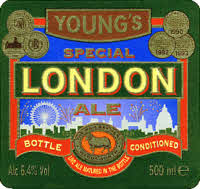 Youngs Special London Ale Youngs’ historic brewery site in the heart of Wandsworth, currently slated for possible redevelopment, produces some highly distinctive bottled beers. Most of these — for example luscious Double Chocolate Stout or barley wine Old Nick — are brewery conditioned, but there’s also a regular “real ale in a bottle” with numerous awards to its credit including Champion Bottle Conditioned Beer of Britain.
The beer began life in the late 1950s as Strong Export Bitter, a filtered strong pale ale inspired by Worthington White Shield, initially targeted at Belgium and brewed under license there for a while. It was renamed Special London Ale when the brewery started exporting to the US market in the late 1980s.
Interestingly, the switch to bottle conditioning in 1998 came about partly as a means of extending the beer’s shelf life in the export market, but the success of 1845 from arch-rival Fullers might also have been a factor. Now it’s the brewery’s second biggest selling bottle, after Waggle Dance, and stocked by numerous supermarkets. For a while the non-BCA version remained available from the brewery’s pubs, but all Special London is now live.
A very traditional ingredients list includes Maris Otter pale malt, crystal malt, and what the label describes as “a phenomenal amount” of Fuggles and Goldings hops. The beer spends several weeks conditioning on a bed of whole Goldings before being sterile-filtered and reseeded with yeast, but no primings, relying on residual sugars to re-start fermentation.
The result is notably easy to pour, emerging a coppery mid-brown, with a fine, lively bead, a loose but persistent off-white head and a minimum of sticky sediment. The malty and slightly meaty aroma is fairly restrained, with a touch of talcum powder and spice.
The big assertive palate begins with a pale malt accent, subdued fig and orange fruitiness and a slightly rough-edged chewiness I find typical of Youngs’ pales. Hops are evident from the start, beginning with a dry, sacky character and turning peppery and estery, with almond notes.
That generous hopping soon shows in a dryish finsih with a tonic water bitterness emerging in the back of the throat and powdery dryness on the tongue, always balanced by generous malt and tannic fruit.
It’s especially gratifying to see a well-established line enjoying such a vigorous new lease of life. But then, Youngs’ ability to balance innovation alongside a conscientious approach to tradition is one of the reasons why they are so appreciated, and why uncertainty about their future is viewed with such concern.
Try also Butts Barbus Barbus, Freeminer Speculation Ale, Museum Worthington White Shield, Woodforde’s Headcracker
Read more about this beer on ratebeer.com: http://www.ratebeer.com/beer/youngs-special-london-ale/140/
Originally published in What’s Brewing January 2004
Origin: Horsham, Sussex, England (now brewed in a filtered bottled or cask version only by the owning brewery, Bath Ales, Bristol, England)
ABV: 5 per cent
Buy from local supermarkets and outlets, Bath Ales (0117 952 7580, www.bathales.com)
 Bath Ales Festivity Festivity, originated by northeast Somerset micro Bath Ales, is one of the most pleasant and welcome of seasonal specials even if, like me, you have rather a bah-humbug attitude to the festive season. In bottled form, it has a short but eventful history. It began as the winter special in the regular draught range from Bath Ales, a micro operating from a steam-driven brewery at Webbs Heath on Bristol’s eastern edge. This success of this beer culminated in a best in class and overall runner up award at the Winter Beer Festival in 2002.
The brewery decided to capitalise on this by launching a bottled version, but faced capacity constraints so decided to contract brew. After a brief stint at Hopback, Festivity went to Brakspear, but with a number of other homeless former inhabitants of Henley it’s now ended up at Hepworths of Horsham. Normally I gripe about a label that doesn’t show the true origin of a beer, but given the many changes I’m inclined to be forgiving in this case.
Festivity describes itself as a “rum porter” though, despite some early experiments with essences, the slight rumminess of its character is derived from quite conventional ingredients: Maris Otter pale malt, crystal, chocolate and wheat malts, roasted barley, and Challenger and Bramling Cross hops. The recipe is the same as the draught version except for the yeast, with enough strength and robust flavour to stand up well to bottling. Though certainly a porter in British terms, it’s quite like one of the new unpasteurised and top fermented Dutch autumn bock beers: dark, malty, fruity and slightly acidic.
It pours a rich dark brown with a ruby tinge and a lovely soft, creamy fawn coloured head. There’s a very smooth aroma combining figgy fruitiness with a slight touch of vanilla and cream, with some leathery, roasty and iron-like mineral tones. The palate is rich but very soft and drinkable, with juicy and plummy fruit, refreshing dark marmalade flavours, a little salt, a porter-like roast quality and a hint of rumminess.
The beer turns quite dry on the swallow, with a remarkably long and complex finish: roasty, smokey notes blend with rich malt and black coffee flavours, a slow developing but never over-assertive hoppiness, and some late very smoky, ashy flavours. Overall it has a beautiful balance of strong, distinctive flavours and drinkability.
Try also Ballard’s Wassail, Hogs Back Wobble in a Bottle, Dolle Brouwers Stille Nacht (Belgium), Wye Valley Dorothy Goodbody’s Christmas Ale
Read more about this beer at ratebeer.com: http://www.ratebeer.com/beer/bath-festivity/13241/
Originally published in What’s Brewing December 2003
Origin: Greenwich, London
ABV: 4.5 per cent (since reformulated to 6.5%)
Buy from supermarkets
 Meantime Chocolate Unlike most British brewers, Alastair Hook, who founded the Meantime microbrewery in Greenwich in 2000, comes to praise lager not to bury it. Alastair was trained both in Edinburgh and at the Weihenstephan school in Munich, and has a mission to brew quality lager in Britain, alongside a range of other European-inspired styles.
Discerning supermarket beer hunters may already have encountered Meantime beers without knowing: the brewery provides Sainsbury’s inspired Taste the Difference series. But it also has its own range in elegant and distinctive bottles, as well as on draught at its pub, the Greenwich Union.
Meantime does offer a tasty Pilsener-style beer that easily puts to shame the thin, weak, under-matured, cheap and nasty travesties of the style traditionally described in Britain as “lager”. But, perhaps even more interestingly, Alastair has acted on the realisation that there’s more to “lager” than Pils.
The Greenwich micro is one of very, very few in Britain to explore the wider repertoire of central European cold fermented and cold matured (or lagered) beers, which can come in as wide a variety of colours and flavours as ales. Non-mainstream lagers are now threatened niche products even in their home countries, so any attempts to popularise them deserve applause.
Chocolate, designed to be served “lightly chilled”, is a dark lager similar to German dunkel or Czech tmavý lagers, but with something of a tweak: the recipe uses chocolate malt for a smooth chocolatey flavour, coupled with a touch of vanilla. Since chocolate and vanilla notes sometimes crop up naturally in this sort of beer, it seems logical to experiment with giving them a helping hand. In the tradition of the style, this is a filtered, though unpasteurised, beer.
The beer itself is a very dark brown — “ebony”, says the label — with only a little head, and a pastilley aroma with a distinct whiff of vanilla pod alongside dark malt and strawberries. The palate is smoothly chocolatey, nicely malty and especially sweet, an authentic combination of richness and drinkability. The vanilla is still distinct, though subtly done, and some drying hop notes begin to emerge.
The finish is soothing, with hops — fresh Fuggles, perhaps surprisingly — starting very far back and slowly become more assertive with a late smoky hint. Although not intense, the finish is long lasting, with more tongue-soothing chocolate. Well worth trying alongside Meantime’s noteworthy takes on Kölsch, Vienna red and Munich-style Festbier in the Sainsbury’s range.
Try also Black Regent (Czech Republic), Franz Josef Urig-Schwarz (Germany), Köstritzer Schwarbier (Germany), Old Miller Dark (Russia), Vyskov Havran (Czech Republic)
Read more about this beer at ratebeer.com: http://www.ratebeer.com/beer/meantime-chocolate/23451/
Originally published in BEER December 2003.
NOTE This review concludes what was originally published as a single longer article. See previous posts for an introduction to Imperial stouts and some other reviews. Scroll down for a 2012 update.
See all parts of this article: http://desdemoor.co.uk/?tag=imperial-stouts-beer-2003
Origin: Tadcaster, North Yorkshire, England
ABV: 10%
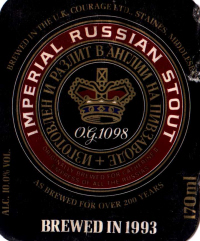 John Smith Courage Imperial Russian Stout I couldn’t conclude this survey without opening one of my few precious remaining 170ml “nip” bottles of the last John Smith-brewed Courage Imperial Russian Stout (10%) from 1993. Also very dark brown, it had an intense sweet malt loaf, coffee and leather aroma, a shockingly full-bodied but not oversweet gravyish malt palate with hints of coffee, orange juice, soft fruit, red wine, black treacle and mincemeat, and a tangily fruity finish with liquorice, blackcurrant, a flourish of hops and a late smokiness. Though the fact that the 2000 Harveys will probably be as complex in 2010 is some consolation, it’s still a great shame the last real link to the Imperial Stouts of an earlier era has finally been broken.
Update February 2012. Having acquired the rights to the Courage brands from Heineken, Wells & Young’s of Bedford revived Courage Imperial Russian Stout in 2011, initially aimed mainly at the US market but with plans to expand distribution in the UK in 2012. You can read more background on this heritage beer and tasting notes on the 2011 version here.
Immediately after tasting the Wells & Young’s revival I dug out one of my few remaining bottles of the John Smith 1993 version for comparison. This very dark brown, near black, beer poured with almost no head and relatively little carbonation (a notable contrast to the new beer). The aroma had soy sauce and marmite notes — the telltale hint of dead, autolysed yeast – but also some raisiny fruit and liquorice.
There was some soy sauce too on a tannic, vinous, malt bread palate with an orange juice note. A lasting, complex and quite bitter tonic water-tinged finish developed herbal and citric flavours reminiscent of Martini Rosso, with a bit of mineral and mint chocolate. At 18 years old, it was still fascinating to drink but perhaps starting to go down, though the remaining bottles may yet surprise me in years to come.
See all parts of this article: http://desdemoor.co.uk/?tag=imperial-stouts-beer-2003
Read more about this beer at ratebeer.com: http://www.ratebeer.com/beer/courage-russian-imperial-stout/9193/
Originally published in BEER December 2003.
NOTE This review forms part of what was originally published as a single longer article. See previous posts for an introduction to Imperial stouts and some other reviews. See the next post to read the final review.
See all parts of this article: http://desdemoor.co.uk/?tag=imperial-stouts-beer-2003
Origin: Lewes, East Sussex, England
ABV: 9%
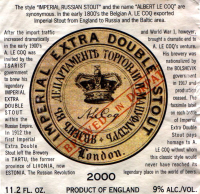 Harveys Imperial Extra Double Stout Harveys Imperial Extra Double Stout (9%), brewed in Lewes but bottled by Gales of Horndean, advertises its authenticity with a reproduction of one of Le Coq’s original labels. While we’ve no way of telling how close this tastes to 19th century brews, my 2000-vintage bottle was certainly an extremely fine beer in its own right. It’s an impenetrable dark brown colour with a cakey, malty and slightly winey aroma, a rich malty and oily palate with hints of strawberries, gravy, coffee and fennel seeds, and a warming roasty mocha coffee finish with earthy hops and late fruit. With the demise of the Courage version, this masterfully complex beer easily deserves recognition as the current flagship of the style.
See the next post to read about more Imperial stouts.
See all parts of this article: http://desdemoor.co.uk/?tag=imperial-stouts-beer-2003
Read more about this beer at ratebeer.com: http://www.ratebeer.com/beer/harveys-imperial-stout/6415/
Originally published in BEER December 2003.
NOTE This review forms part of what was originally published as a single longer article. See previous posts for an introduction to Imperial stouts and some other reviews. See the next post to continue reading about further Imperial stouts.See all parts of this article: http://desdemoor.co.uk/?tag=imperial-stouts-beer-2003
Origin: Lochristi, East Flanders, Belgium
ABV: 8.5%
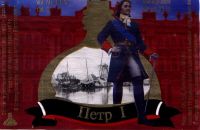 Proef SNAB Петр I More obviously inspired by the Russian connection is Czaar Peter (8.5%), or “Pyotr I” as the front label has it in Cyrillic, commemorating Tsar Peter the Great’s stint as a ship’s carpenter in Zaandam in 1697. Although marketed by SNAB, the North Holland Alternative Brewers’ Association, it is brewed under contract in Belgium, at Proef of Lochristi, East Flanders. Also lighter than the British versions, it has a rich, nicely-balanced biscuity, roasty and coffeeish palate, with a rummy chocolate liqueur finish developing a firm but pleasantly rounded Challenger hoppiness recalling classic Irish stout. From the Netherlands Peter went to Deptford, where he might have sampled the forerunners of porter; later, in founding St Petersburg, he gave Russia access to the Baltic trade that eventually brought London stout to its shores.
See the next post to read about more Imperial stouts.
See all parts of this article: http://desdemoor.co.uk/?tag=imperial-stouts-beer-2003
Read more about this beer at ratebeer.com: http://www.ratebeer.com/beer/snab-czaar-peter/18131/
Originally published in BEER December 2003.
NOTE This review forms part of what was originally published as a single longer article. See previous posts for an introduction to Imperial stouts and some other reviews. See the next post to continue reading about further Imperial stouts.
See all parts of this article: http://desdemoor.co.uk/?tag=imperial-stouts-beer-2003
Origin: Ellezelles, Hainaut, Belgium
ABV: 8.4%
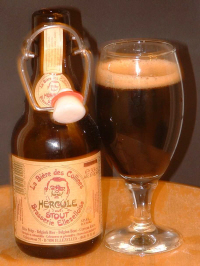 Ellezelloise Hercule Ellezelloise Hercule (8.4%), from a micro in what counts locally as hilly country in the north of Hainaut, Belgium, is slightly lighter, weaker and less leathery than it used to be but still clearly inspired by British strong stouts. It’s a lighter colour — a dark ruby brown — and rather fruitier, with blackcurrant and tar on the aroma and a loganberry touch to the sharpish palate. However the slow developing flavours of roasted coffee, ashy bitter chocolate and tongue-furring hops on the finish are authentically stoutish. The name refers to Agatha Christie’s character Poirot: I guess a Wallonian take on an historic English beer style is an appropriate return compliment for a Wallonian character invented by an historic Englishwoman.
See the next post to read about more Imperial stouts.
See all parts of this article: http://desdemoor.co.uk/?tag=imperial-stouts-beer-2003
Read more about this beer at ratebeer.com: http://www.ratebeer.com/beer/ellezelloise-hercule-stout/6701/
Originally published in BEER December 2003.
NOTE This review forms part of what was originally published as a single longer article. See previous posts for an introduction to Imperial stouts and some other reviews. See the next post to continue reading about further Imperial stouts.
See all parts of this article: http://desdemoor.co.uk/?tag=imperial-stouts-beer-2003
Origin: Bowburn, Durham, England
ABV: 10%
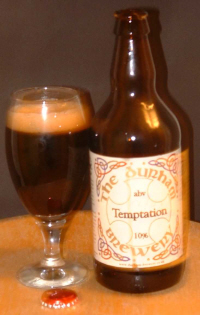 Durham Temptation Durham Temptation (10%) once carried the more transparent name Imperial Russian Stout, but has been renamed in line with the mock-ecclesiastical house style of this brewery from the land of the Prince Bishops. The very dark ruby beer has a tarry, oily and liquoricey aroma and a full sweetish malt loaf and chocolate palate immediately enlivened by roastiness, hops and a splash of alcohol. The smoky, hoppy and espresso coffee finish is particularly pleasant and well-rounded. The brewery should consider smaller bottles, though: half a litre in one go is more a challenge than a temptation!
See the next post to read about more Imperial stouts.
See all parts of this article: http://desdemoor.co.uk/?tag=imperial-stouts-beer-2003
Read more about this beer at ratebeer.com: http://www.ratebeer.com/beer/durham-temptation/28517/
Originally published in BEER December 2003.
NOTE This review forms part of what was originally published as a single longer article. See the previous post for an introduction to Imperial stouts and the first review. See the next post to continue reading about further Imperial stouts.
See all parts of this article: http://desdemoor.co.uk/?tag=imperial-stouts-beer-2003
Origin: Market Weston, Suffolk, England
ABV: 9.6%
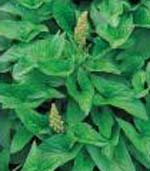 This beer is actually named after a brassica called Good King Henry, which looks like this. Old Chimneys Good King Henry Imperial Stout (9.6%) also originates from a micro that isn’t afraid to experiment, based at Market Weston in Suffolk. Its blackcurrant pastille, marmite and coffee aroma and dense black ruby-tinged appearance are very alluring, but I found the big malty palate a tad too sweet and syrupy. A good roast and hop flavour develops in the lingering finish, where the sweetness turns slightly sherryish.
See the next post to read about more Imperial stouts.
See all parts of this article: http://desdemoor.co.uk/?tag=imperial-stouts-beer-2003
Read more about this beer at ratebeer.com: http://www.ratebeer.com/beer/old-chimneys-good-king-henry/23554/
Originally published in BEER December 2003.
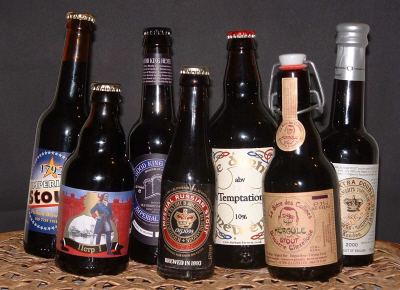 Imperial stouts NOTE This review forms part of what was originally published as a single longer article. See the link at the end to continue reading about further Imperial stouts considered alongside this one.
See all parts of this article: http://desdemoor.co.uk/?tag=imperial-stouts-beer-2003
Origin: London, England (since moved to Epping, Essex, England)
ABV: 9.3%
Imperial stout, sometimes known as Russian stout, is a rare traditional British beer style at a strength for contemplative sipping. Its pedigree goes back to the development of porter in London at the dawn of large-scale commercial brewing in Britain, and somehow it has survived — but only just, a lone potent black brew amidst a pale sea of session-strength guzzlers.
Stout was originally “stout porter” — the adjective “stout” meaning strong was once applied to beer regardless of colour, but in the 19th century it first became wedded to porter and then used on its own. Very strong stouts proved particularly successful in the export trade to the Baltic and Russia: the “imperial” epithet refers to the Russian, not the British, empire, recognising the royal warrant granted to Albert Le Coq, a 19th century Belgian importer of British beer who found favour with the Tsar by donating beer supplies to the army. When Le Coq’s preferential deal ended early in the 20th century, the company opened its own brewery in Tartu, Estonia, which today is once again brewing Le Coq Porter, though as a cold-fermented and pasteurised beer.
Back in London, only Barclay Perkins eventually retained the style: its Imperial Russian Stout was later inherited by Courage, and became one of only a handful of bottle-conditioned beers still around at the founding of CAMRA. When Courage quit London, this niggling anomaly in the corporate strategy went north to John Smith’s in Tadcaster, where it was finally dumped in 1993, although a modified, pasteurised version apparently emerged in 1999 for export to Finland.
Always a style that enjoyed its greatest success outside its country of origin, Imperial Stout survives into contemporary times largely because of overseas interest. In the 1980s John Smith’s neighbour Samuel Smith launched a weaker (7% ABV) brewery conditioned version and at first didn’t even attempt to sell it in Britain, shipping it straight to their US importer instead. The restoration of a bottle conditioned example came in 1999 from another renowned independent, Harvey of Lewes, again on request from the States, and since then a number of micros have entered the fray.
I’ve looked below at a representative selection of bottled conditioned strong stouts, including a couple from Belgium. All these beers are worth trying: it’s unlikely a brewer will attempt such an unusual speciality without coming up with something that’s at least interesting, and some are sublime classics. And given the precariousness of the style’s survival, they are all well deserving of our support.
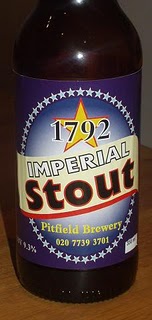 Pitfield's 1792 Imperial Stout Pitfield’s 1792 Imperial Stout
(9.3% ABV) is the only example now brewed in London, just a stone’s throw from Shoreditch, the historic home of porter. The brewery takes full advantage of its attached beer shop to experiment with small batches of unusual styles: this is one of a series of recent historical recreations. It’s an opaque dark brown beer that offers a very well-balanced take on the style, perhaps more accessible than some: big bodied and richly malty but notably light drinking for its gravity, with a good roasted character, complex aniseed, fennel and cherry fruit notes and a tangy and hoppy roast and chocolate finish.
See the next post to read about more Imperial stouts.
See all parts of this article: http://desdemoor.co.uk/?tag=imperial-stouts-beer-2003
Read more about this beer at ratebeer.com: http://www.ratebeer.com/beer/pitfield-1792-imperial-stout/23799/
|
Cask  This pioneering new book explains what makes cask beer so special, and explores its past, present and future. Order now from CAMRA Books. Read more here. This pioneering new book explains what makes cask beer so special, and explores its past, present and future. Order now from CAMRA Books. Read more here.
London’s Best Beer  The fully updated 3rd edition of my essential award-winning guide to London’s vibrant beer scene is available now from CAMRA Books. Read more here. The fully updated 3rd edition of my essential award-winning guide to London’s vibrant beer scene is available now from CAMRA Books. Read more here.
|















